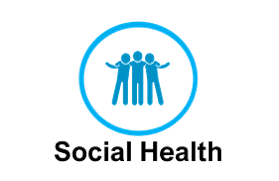Disease prevention focuses on specific actions covering many social and environmental interventions to protect people’s health and provide quality of life. It minimizes the burden of diseases by taking precautions against the risk of primary and secondary diseases. In other words, it minimizes the ratio of death due to diseases.
Prevention of diseases, either communicable or non-communicable, has critical importance to achieving health goals under UHC, helpful to reduce the burden on service providers and keep people healthy. Therefore, it should be a part of a health media campaign. Here the target audience is the beneficiary i.e. families of communities. The precautions of prevention are following.
- Induction of health education in early school syllabus.
- Availability of 100% fresh and safe foods at the doorstep in rural and urban areas of the country.
- Eradication of toxicological hazards in agricultural or manufacturing food products from the market or permanently ban the import of all these products and equipment.
- The use of bicycles instead of motorbikes and cars to avoid pollution and encourage body exercises like Dutch Cycling.
- Spreading a net of free not paid Public Park and spots containing walking and running tracks in rural and urban areas of the country to exercise and enjoy the fresh air by the people of the community.
- Supply of clean and healthy drinking water i.e. sanitation system at the doorstep especially in rural areas of the country. Video Link
- Proper sewerage systems and road infrastructure in rural and urban areas of the country. Video Link
- The living style of the people, especially by considering cross ventilation and the sunlight system in buildings.
- Installation of street lights and their regular maintenance. Today’s solar lights are economical.
- Developing tradition and massive use of food supplements instead of medicines.
- Establishing a trend of breastfeeding by mothers for the healthy childhood of children.
- Encourage the delivery process of the pregnant lady by a gynecologist in a hospital nearest to the locality instead of home by a Traditional Birth Attendant (TBA).
- Promotion of gender equality.
- Strongly discourage the marriage of teenage girls to avoid complications in the delivery process and premature death.
- Elaboration of effects and side effects of communicable and non-communicable diseases, unnecessary use of medicine, drugs, and smoking.
- Precautions in pandemics like COVID-19, Dan gee, Tuberculosis.
- Reduction of environmental pollution by planting trees in the country.
- Migration of people from congested to posh areas.
- The motivation of children, adults, and old age people having chronic diseases to join rehabilitation centers nearest to their locality.
Now the question is how these precautions can be implemented in societies or communities? Who will perform these jobs, where will the resources be allocated?
A high utilization rate of health facilities means social mobilization, accepted promotion, and ineffective efforts/actions towards disease prevention. The low utilization rate of health facilities means ineffective health promotion or practical efforts or actions have been taken to implement the above precaution of disease prevention which in turn reduce the burden of service providers but increase the profit commission ratio of insurance companies and, ultimately, a significant portion of it will be repaid or deposited in UHC Fund. Such amount may be utilized to:
- Develop reforms in Food and Quality Control Authorities of the country to make sure the availability of fresh food and destroys substandard food either agricultural or manufactured, on production level and eradication of use and ban import the hazardous products.
- Develop or bring reforms in the Local Government to ensure sanitation and sewerage systems, street lights, public parks and spots, ventilation, and sunlight systems in buildings.
- Develop or bring reforms in Forestry and agriculture to ensure a pollution-free environment by plantation of trees.
- A strong media campaign for motivation and law binding of people to use Bicycle instead of Motorbike or car, encourage food supplements, establishing the trend of breastfeeding by mothers, especially in urban areas, encouraging delivery process by a gynecologist in a hospital, especially in rural areas, promotion of equality in gender, discouragement of the marriage of teenage girls, elaboration of effects and side effects of excessive use of medicines, drugs, and smoking, precautions in a pandemic. A recent example of a COVID-19 media campaign has evolved the trend of the world such as social distance, taking masks, not shaking hands, washing hands with sanitizer.
Chemical or toxicological hazards have been neglected in developing countries that can originate from raw material to processing in agricultural and manufacturing food products also in street foods. Read more...
More detail








ReplyDeleteThis is absolutely true and you have shown the right picture .
Govt should consider to implement
ReplyDelete